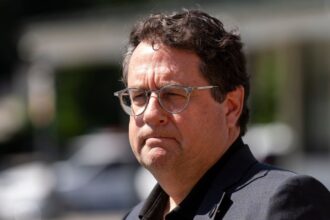The gleaming government jets have been logging significant air miles since Mark Carney took office, reflecting a clear geographic strategy that prioritizes strengthening Canada’s traditional alliances. An analysis of Prime Minister Carney’s international itinerary reveals he ranks as the fourth most-travelled leader among G7 nations, with a distinct focus on European capitals and Washington—a pattern that signals both his diplomatic priorities and governing philosophy.
Since assuming leadership, Carney has conducted 47 international visits spanning 32 countries, demonstrating an approach that emphasizes face-to-face diplomacy with Canada’s closest historical partners. This travel pattern stands in marked contrast to his predecessor Justin Trudeau’s early years, which featured more balanced global engagement including significant outreach to Indo-Pacific nations.
“The prime minister’s travel schedule reflects our government’s commitment to reinvigorating Canada’s traditional alliances while addressing today’s most urgent global challenges,” said Foreign Affairs Minister Mélanie Joly in a statement to CO24 World News.
Carney’s European focus has been particularly pronounced, with 19 trips to the continent—including multiple visits to Brussels, Paris, and London. This European emphasis aligns with his pre-political career trajectory as former Bank of England governor and his frequently stated belief in multilateral institutions as vehicles for addressing climate change, economic stability and security challenges.
The United States has received eight prime ministerial visits, underscoring what experts describe as Carney’s pragmatic approach to Canada’s most essential bilateral relationship. His regular presence in Washington comes as both nations navigate complex trade tensions, border security concerns, and coordination on global issues from Ukraine to climate policy.
“When we examine Prime Minister Carney’s travel patterns, we’re seeing someone who clearly believes in the importance of Canada’s traditional Western partnerships,” explained Dr. Roland Paris, international relations professor at the University of Ottawa, in an interview with CO24 Politics. “This represents both continuity and change—maintaining Canada’s core diplomatic relationships while refocusing energy on multilateral forums where he believes Canada can exert meaningful influence.”
The travel priorities may also reflect Carney’s economic background and focus on trade relationships that directly impact Canada’s economy. The European Union remains Canada’s second-largest trading partner after the United States, with bilateral trade exceeding $100 billion annually.
Critics, however, argue the prime minister’s travel patterns reveal potential blind spots. Opposition foreign affairs critic Michael Chong noted that “while the government focuses on Europe, China and India are reshaping the global order. The prime minister’s relative neglect of the Indo-Pacific region risks Canada being left behind in the world’s most economically dynamic region.”
The Prime Minister’s Office defends Carney’s travel choices as strategic rather than neglectful. “The prime minister’s engagement priorities reflect where Canada can make the most meaningful difference in this moment of global uncertainty,” said PMO spokesperson Rachel Williams. “This includes strengthening our most vital partnerships while continuing to engage with diverse partners across the globe.”
While Carney trails behind U.S. President Harris, French President Macron and Italian Prime Minister Meloni in total trips, his travel frequency exceeds that of British Prime Minister Starmer, German Chancellor Scholz and Japanese Prime Minister Ishiba. The data suggests an active international presence that balances domestic governance with targeted global engagement.
As global challenges intensify—from climate change to regional conflicts and economic uncertainty—the question remains: will Carney’s European-focused diplomacy deliver tangible benefits for Canadians, or will it leave Canada playing catch-up in regions rapidly transforming the global economic landscape?







